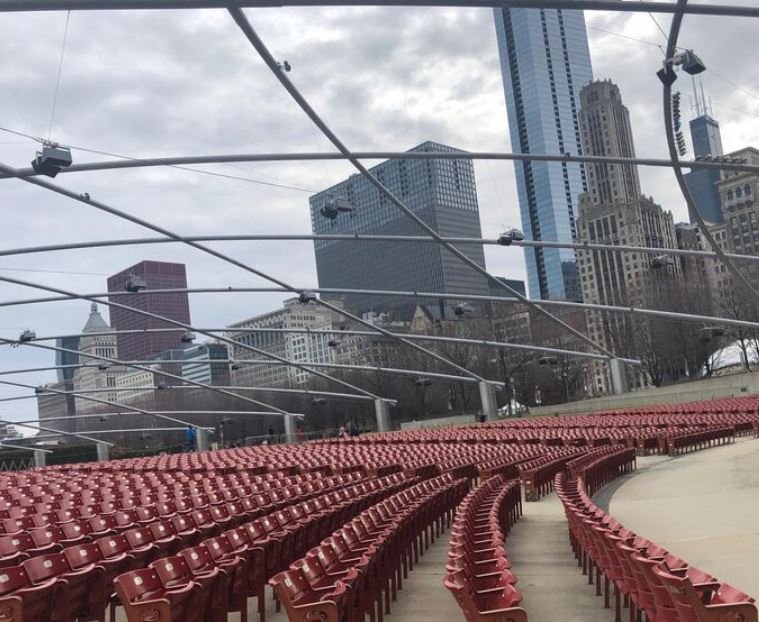
Entering a brand-new mega stadium is an unquestionably amazing sight. It all seems like progress: tall steel arches, opulent boxes shining in floodlights, and fans raising flags in unison. Beneath that feeling of civic pride, however, is a remarkably complicated story that is conveyed through tax bills, unstated subsidies, and silent trade-offs that continue long after the last whistle blows.
Public funding for professional sports stadiums has increased by more than $43 billion over the last 20 years. Politicians frequently portray these initiatives as catalysts for economic recovery, promising the expansion of local companies and the creation of jobs. Although the story seems motivating, studies consistently demonstrate that these advantages are greatly exaggerated. Often, what appears to be investment is actually debt masquerading as celebration.
| Aspect | Description |
|---|---|
| Primary Issue | Public subsidies for stadiums often exceed projected community benefits |
| Total Public Spending | Over $43 billion since 2000 on stadium projects across the United States |
| Hidden Financial Tools | Tax breaks, infrastructure grants, rent exemptions, and TIF districts |
| Public Share Examples | U.S. Bank Stadium (45%), Allegiant Stadium (38%), AT&T Stadium (37%) |
| Economic Reality | Promised growth often redistributes existing spending rather than creating new activity |
| Key Experts | Neil DeMause, Geoffrey Propheter, Peter Boumgarden, Mark Rosentraub |
| Notable Case Studies | Cleveland Domed Stadium Plan, St. Louis CITYPARK, Allegiant Stadium |
| Social Impact | Strains public budgets, diverting funds from education and healthcare |
| Evolving Trends | Shift toward private ownership and family-backed investments |
| Reference | The Conversation – Stadiums Don’t Have to Be a Drain on Taxpayer Dollars |
Neil DeMause, an economist, refers to this pattern as “the art of hiding subsidies under rocks.” Examining stadium financing agreements that appear to have “no taxpayer burden” but mainly rely on indirect funding makes his point especially evident. To lessen the financial burden on franchise owners, cities implement public infrastructure spending, rent waivers, and tax-increment financing districts. Although the headline says “privately funded,” the truth frequently involves tax money that has been covertly diverted and public debt.
This dynamic is aptly demonstrated by the tale of Cleveland’s proposed $2.4 billion domed stadium. The announcement proposed a fair public-private collaboration. Behind the well-crafted press releases, however, were state documents that showed millions of dollars were allotted for land grants, infrastructure upgrades, and continuing maintenance expenses, all of which came from public coffers. Unbeknownst to them, taxpayers acquire lifelong stock in a company they have no control over.
Cities all follow this pattern. In 1979, the construction of Minneapolis’s Metrodome cost $55 million. U.S. Bank Stadium, its replacement, opened in 2016 at a cost of $1.06 billion, of which 45% was paid for by the government. That’s almost 1,800% more when inflation is taken into account. However, there was no consistent increase in employment or tourism, according to local studies. But what these projects consistently result in are decades’ worth of debt obligations.
According to a 2017 survey, 80% of economists think stadium subsidies have little to no economic impact. The majority of the money made in stadium districts is merely used to replace money already spent in other parts of the city. A family’s entertainment budget simply moves from a neighborhood restaurant to a concession stand; it doesn’t increase. One study came to the amusing conclusion that a sports franchise’s financial impact is similar to that of a mid-sized department store.
Sports still have a strong emotional pull. There is a sense of community created by the shared excitement of game day that cannot be measured by numbers alone. Politicians are well aware of this sentiment and frequently time stadium announcements to fall during playoff runs or significant civic events. These announcements aid in “framing the narrative before the facts catch up,” according to economist Geoffrey Propheter. Reasonable budgeting takes a backseat once public sentiment takes center stage.
This is not the case in every city. In 2016, it appeared that yet another chapter in the taxpayer-funded stadium saga had come to a bad end when St. Louis lost to Los Angeles against the Rams. However, a different story surfaced in 2023. For their new soccer team, St. Louis CITY SC, the Taylor family, who own Enterprise Mobility, privately funded the construction of CITYPARK. They declined significant public subsidies but accepted small tax breaks. The outcome? a successful endeavor that, without putting a strain on taxpayers, became a model for urban revitalization.
This strategy is in stark contrast to the Raiders’ home stadium in Las Vegas, Allegiant Stadium, where hotel taxes generated almost $750 million in public funding. Almost immediately after the pandemic shut down tourism, the city’s repayment plan collapsed. The lesson was very clear: financing stadiums through shaky sectors like hospitality leads to social and financial vulnerability.
Professor Mark Rosentraub of the University of Michigan has been researching these financing models for years. He notes that bonds used to build stadiums frequently rely on erratic sources of income, like taxes on hotel occupancy or vehicle rentals. Local governments draw from general funds, which are intended for transportation, healthcare, and education, when those streams dry up. It’s a very effective method of converting popular enthusiasm into personal benefit.
Stadium maintenance and renovation expenses are rarely kept secret, even when everything runs smoothly. Unexpected repairs, cancelled concerts, and empty seats during off-seasons generate extra costs that local governments cover in silence. Some stadiums, such as those in smaller markets, find it difficult to generate enough revenue from events to cover their expenses. They are referred to by economists as “white elephants” because they are magnificent, costly, and impossible to care for without constant feeding.
The social impact is just as noticeable outside of the balance sheets. Spending by the public on large stadiums takes funds away from more important services. The new Bills stadium in Buffalo will cost taxpayers $850 million, but the surrounding communities are still home to dilapidated schools and underfunded clinics. During these times, civic pride begins to appear more like misguided priorities than progress.
However, there is reason for optimism—change is occurring. Different ways of negotiating are being learned by cities. Shared-revenue models, in which a percentage of ticket or concession sales are given back to the community, are what some people are demanding. Others are looking into adaptively repurposing older spaces to create affordable housing, mixed-use projects, or public areas. These initiatives are not only more cost-effective, but they also significantly improve public trust.
Private capital and family ownership have been especially helpful in achieving long-term results. Local investors with strong community ties frequently make decisions with long-term effects in mind rather than short-term political optics, as shown by projects like CITYPARK in St. Louis. It serves as a positive reminder that advancement need not come at the expense of the general welfare.
The opulence and architecture of the massive stadiums that are springing up all over America will never cease to attract attention. Behind their LED screens and mirrored glass, however, is a more subdued reality: every parking lot, every luxury suite, and every seat has an invisible price tag that millions of people who might never go to a game share. Cities can create futures as robust and long-lasting as the buildings themselves by reconsidering how we fund and oversee these enormous projects—without concealing the expense beneath the din of the crowd.
